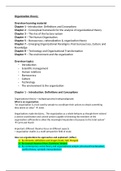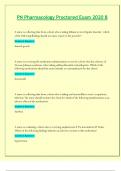Samenvatting
Summary Organization Theory- Tension and Change by David Jaffee
- Instelling
- Radboud Universiteit Nijmegen (RU)
Summary of the course Organization Theory. Organised notes from lectures combined with a summary of the following chapters of the book: 1,2,3,4,5,7,8,9 From David Jaffee - Tension and Change
[Meer zien]














